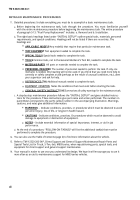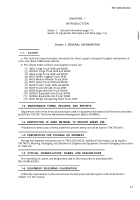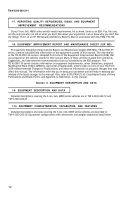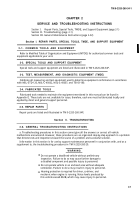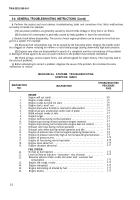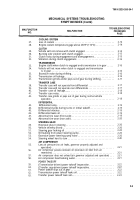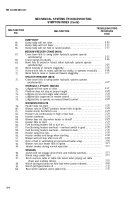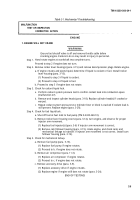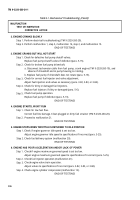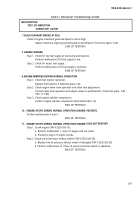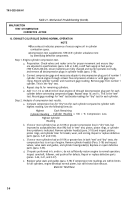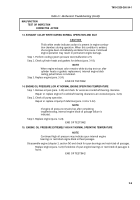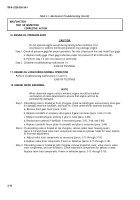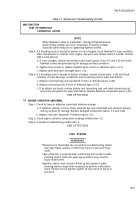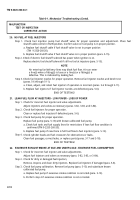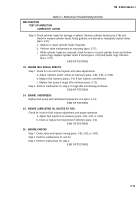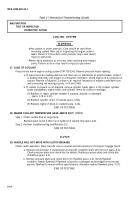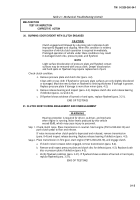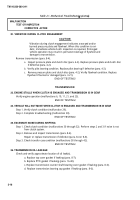TM-9-2320-260-34-1 - Page 22 of 657
TM 9-2320-260-34-1
Table 2-1. Mechanical Troubleshooting
(Contd).
MALFUNCTION
TEST OR INSPECTION
CORRECTIVE ACTION
12. EXHAUST COLOR BLUE DURING NORMAL OPERATION
NOTE
Blue exhaust indicates presence of excess engine oil in cylinder
combustion space.
Compression test supplements STE-ICE cylinder unbalance test
by identifying defective components.
Step 1. Engine cylinder compression test.
a.
b.
c.
d.
Preparation: Check valves and rocker arms for proper movement and ensure they
are adjusted to specifications (para. 3-82 or 3-83), cutoff fuel supply at fuel pump
(TM 9-2320-260-20), ensure batteries are fully charged and starter operates normally,
and remove all decompression plugs in cylinder heads (para. 3-18).
Connect compression gage and necessary adapter to decompression plug port of number 1
cylinder. Crank engine through at least five compression strokes or until gage stops
rising. Record cylinder number and maximum gage reading. Remove gage from number 1
cylinder. This is the “dry” test.
Repeat step lb. for remaining cylinders.
Add 1 to 1-1/2 oz (28-43 ml) of clean engine oil through decompression plug port for each
cylinder before connecting compression-gage. Repeat steps 1b. and 1c. This is the “wet”
test. Record gage readings for “wet” test beside readings for “dry” test for each cylinder.
Step 2. Analysis of compression test results.
a.
b.
c.
d.
e.
Compute compression loss for “dry” test for each cylinder compared to cylinder with
highest reading. Use the following formula:
Highest
Each Remaining
Cylinder Reading
- Cylinder Reading x 100 = % Compression Loss
Highest Cylinder
Reading
If one or more cylinders has an 8-10% or greater compression loss in “dry” test, but
improved to acceptable (less than 8%) loss in “wet” test, piston, piston rings, or cylinder
liner problem is indicated. Remove cylinder head(s) (para. 3-18) and inspect pistons,
piston rings, and cylinder liner for breaks, wear, and scoring. Repair or replace defective
parts (paras. 3-47 and 3-50).
If one or more cylinders had an 8-10% or greater loss in both “wet” and “dry” tests, the
compression loss is on top of engine. Remove cylinder head(s) (Para. 3-18) and inspect
valves, valve seats and guides, and cylinder head gasket(s). Replace or repair defective
parts (para. 3-53).
If repairs performed in b. and/or c. do not sufficiently restore engine to normal operation,
inspect camshaft, follower, and pushrod for defects. Repair or replace defective parts
(paras. 3-44, 3-41, and 3-37).
Replace valve seats and guides (para. 3-78) if compression test readings are within limits
for all cylinders, engine develops normal power, but still shows blue exhaust.
END OF TESTING!
2-8
Back to Top

